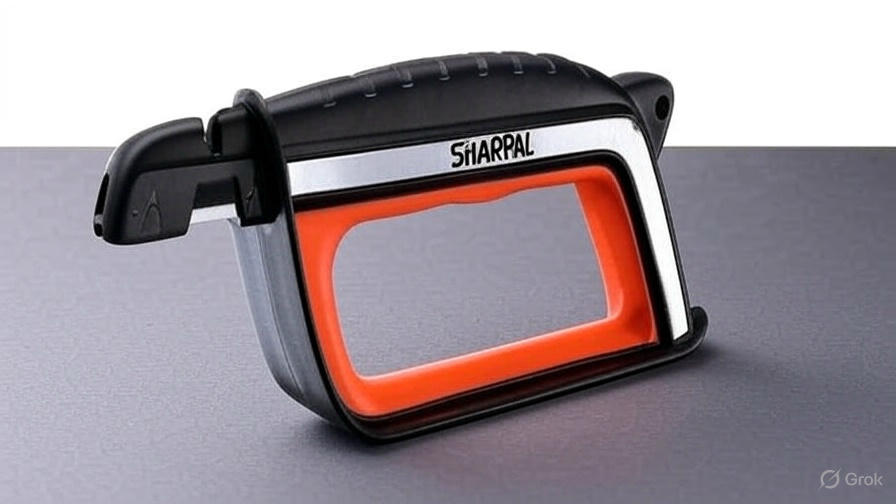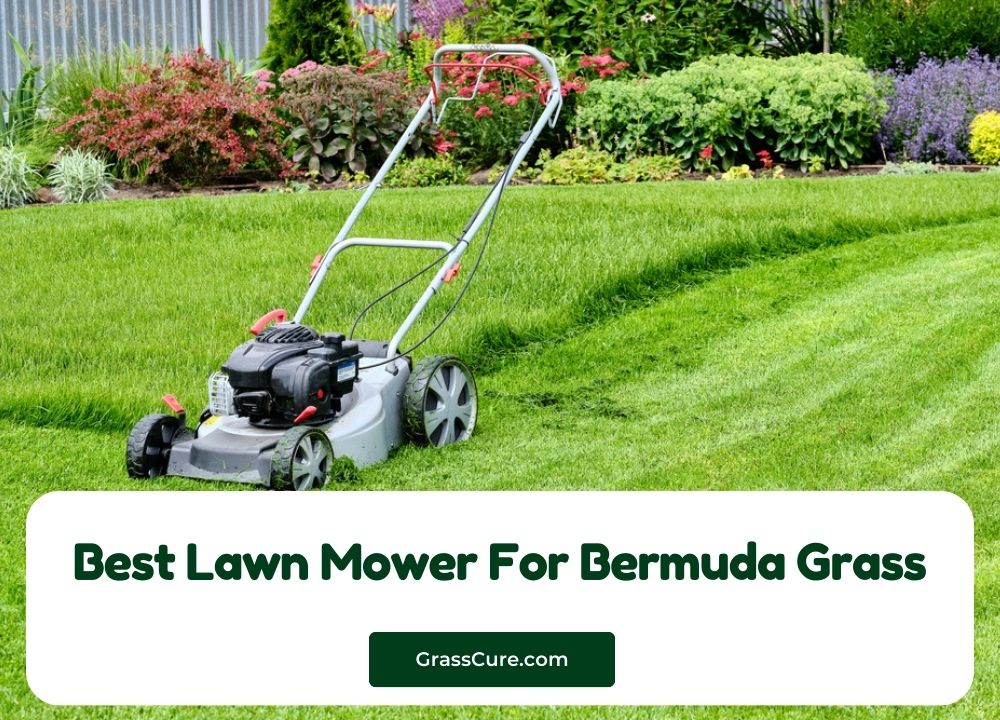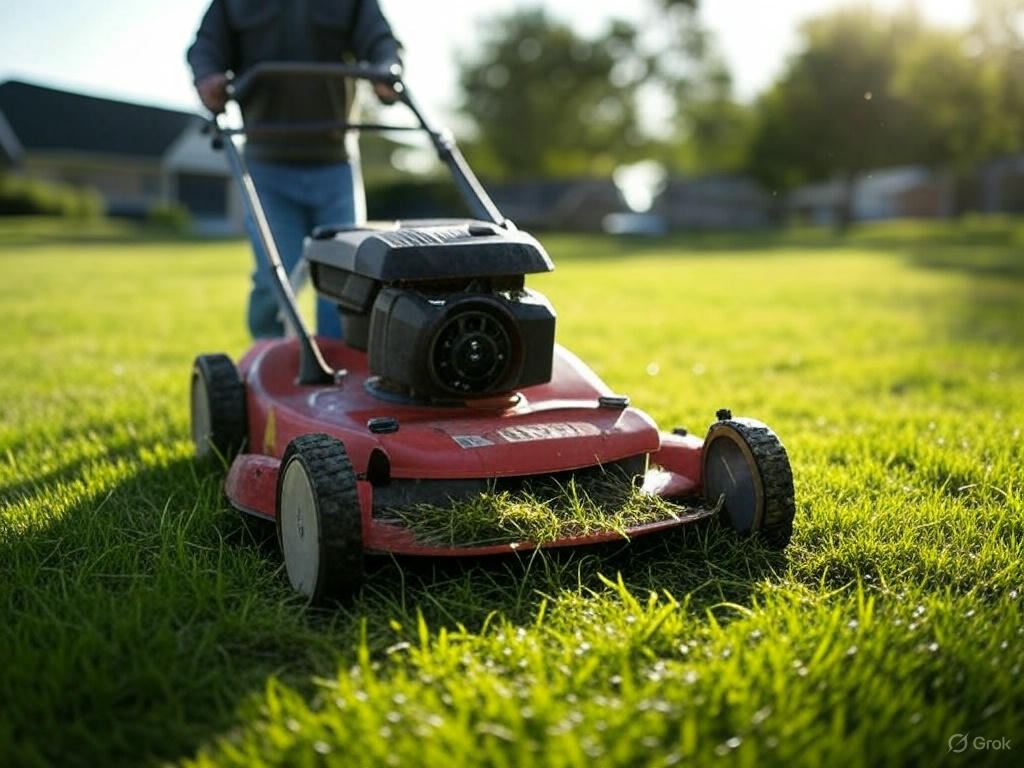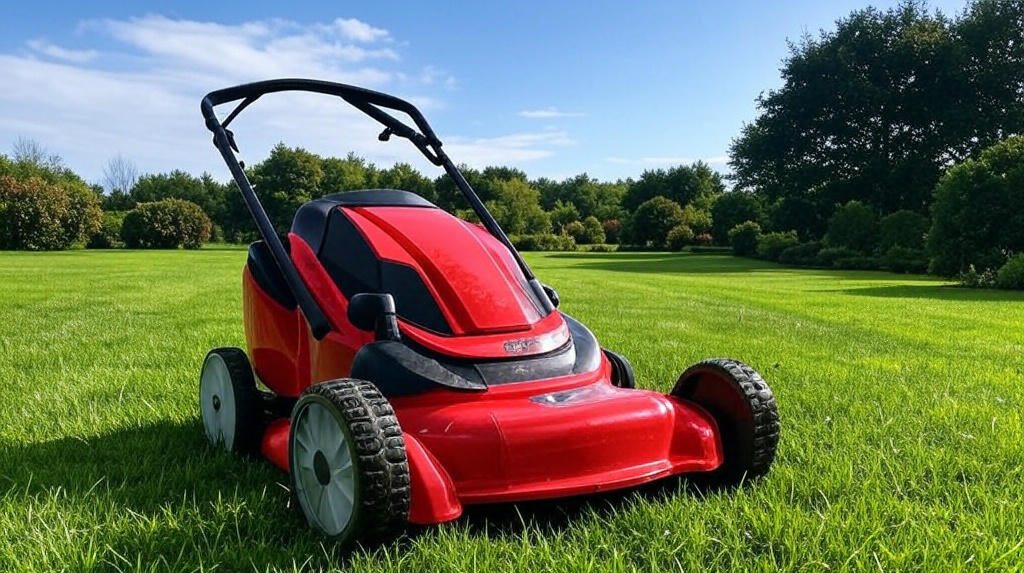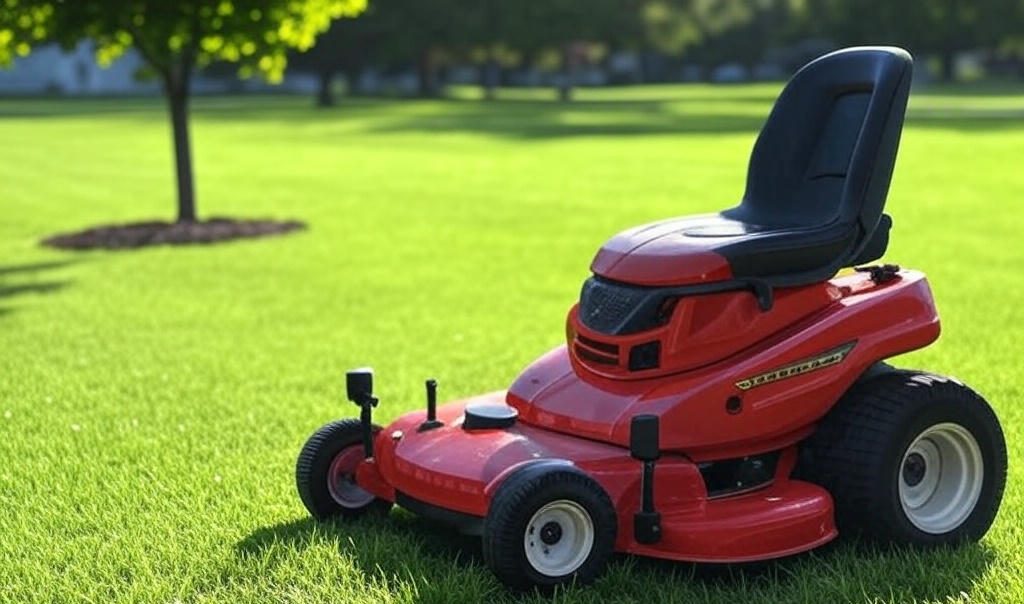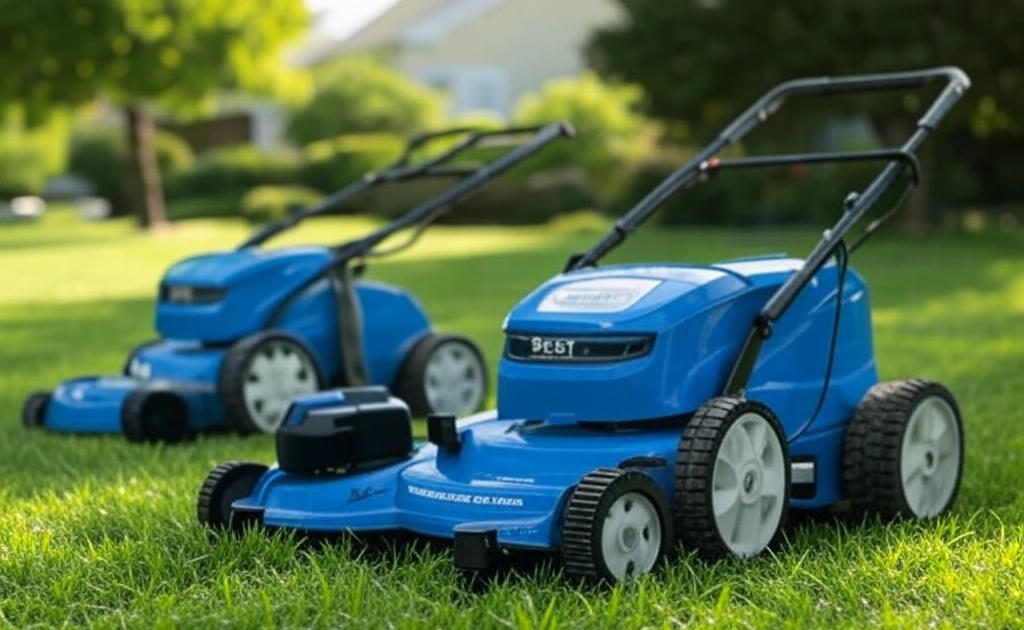Your lawn’s health depends on more than water and fertilizer. Sharp mower blades create clean cuts that promote grass health, while dull blades tear and damage grass, leaving your lawn vulnerable to disease and browning. Most homeowners should sharpen their lawn mower blades twice a year, making a quality blade sharpener an essential tool for lawn care enthusiasts.
This comprehensive guide examines the top lawn mower blade sharpeners available today. We’ll explore different sharpening methods, analyze user experiences, and help you choose the perfect tool for maintaining razor-sharp blades that deliver professional-quality cuts.
Contents
- Why Sharp Lawn Mower Blades Matter
- Signs Your Mower Blades Need Sharpening
- Top 5 Lawn Mower Blade Sharpeners Reviewed
- Choosing the Right Blade Sharpener for Your Needs
- Blade Sharpening Techniques and Best Practices
- Cost Analysis: DIY vs Professional Sharpening
- Safety Considerations and Precautions
- Maintenance and Storage of Sharpening Tools
- Troubleshooting Common Sharpening Problems
- Advanced Sharpening Techniques
- Environmental Impact and Sustainability
- Conclusion
- Why Sharp Lawn Mower Blades Matter
- Signs Your Mower Blades Need Sharpening
Why Sharp Lawn Mower Blades Matter
Before diving into product reviews, understanding the importance of blade maintenance sets the foundation for making informed purchasing decisions. Lawn mower blades should be sharpened after 20 to 25 hours of use, though this frequency may increase based on cutting conditions and grass types.
Sharp blades slice through grass cleanly, creating wounds that heal quickly and resist disease. Dull blades, conversely, crush and tear grass blades, creating jagged wounds that invite pathogens and stress the plant. The visual difference between lawns cut with sharp versus dull blades becomes apparent within days of mowing.
Professional landscapers recognize that blade sharpness directly impacts their work quality and client satisfaction. Stone can easily dent or nick the blades, making regular sharpening even more critical for those working in challenging environments with rocks, roots, and debris.
Signs Your Mower Blades Need Sharpening
Recognizing when blades require attention prevents lawn damage and ensures optimal cutting performance. Several visual and performance indicators signal the need for blade maintenance.
Brown grass tips appear within 24-48 hours of cutting with dull blades. This browning occurs because torn grass tissues cannot seal properly, allowing moisture loss and creating entry points for diseases. Sharp blades create clean cuts that seal naturally, maintaining the grass’s green appearance.
Uneven cutting patterns indicate blade problems that sharpening can resolve. When one blade edge becomes duller than others, the mower pulls slightly in one direction, creating strips of longer grass. This unevenness becomes particularly noticeable on flat, well-maintained lawns.
Increased mowing time and effort suggest blade dulling. Sharp blades require less engine power to cut through grass, while dull blades force the engine to work harder. You’ll notice increased fuel consumption, longer cutting times, and potentially engine strain when blades lose their edge.
Top 5 Lawn Mower Blade Sharpeners Reviewed
1. Updated Lawn Mower Blade Sharpener with Adjustable Frame

Rating: 4.7/5 Stars
This adjustable frame sharpener stands out for its versatility and precision. The 15°-45° adjustment range accommodates various blade types and sharpening needs, while the ball bearing handle ensures smooth operation during extended sharpening sessions.
Key Features:
- Adjustable angle settings from 15° to 45°
- Ball bearing handle for reduced friction
- Compatible with right and left-hand blades
- Works with standard angle grinders
- Heavy-duty construction for professional use
The black powder-coated finish resists corrosion and maintains its appearance even with frequent outdoor use. Users consistently praise this sharpener’s ability to restore extremely dull blades to like-new condition. “It fixed them and I could have cut paper with them” exemplifies the sharpness levels achievable with this tool.
Pros:
- Precise angle control prevents over-grinding
- Ergonomic handle reduces hand fatigue
- Suitable for professional and homeowner use
- Compatible with most blade sizes and types
- Consistent results across multiple sharpenings
Cons:
- Requires separate angle grinder purchase
- Learning curve for optimal technique
- Higher initial investment than simple files
The adjustable frame design accommodates blades from push mowers to riding mowers, making it a versatile choice for households with multiple mower types. The precision angle guides ensure consistent bevels that maintain proper blade geometry for optimal cutting performance.
2. SHARPAL 103N All-in-1 Multi-Sharpener

Rating: 4.5/5 Stars
SHARPAL’s comprehensive sharpening solution addresses multiple garden tools beyond mower blades. This multi-tool approach appeals to users seeking versatility and value in a single purchase.
Key Features:
- Multiple sharpening surfaces for different tools
- Compact, portable design
- No electricity or additional tools required
- Suitable for axes, hatchets, machetes, and pruners
- Includes protective sheath for safe storage
The 103N excels at quick touch-ups and maintenance sharpening rather than major restoration work. Its carbide sharpening elements remove metal efficiently while maintaining proper blade angles. The tool’s compact size makes it ideal for field maintenance and storage in small spaces.
Pros:
- Versatile tool for multiple garden implements
- No power source required
- Lightweight and portable
- Affordable entry-level option
- Simple operation requires minimal skill
Cons:
- Limited effectiveness on severely dull blades
- Slower than powered sharpening methods
- May require multiple passes for optimal results
Garden tool maintenance becomes simplified with this all-in-one approach. The ability to sharpen pruners, hedge shears, and mower blades with a single tool reduces the need for multiple specialized sharpeners, appealing to casual users and those with limited storage space.
3. Adjustable Mower Blade Sharpener with Balancer
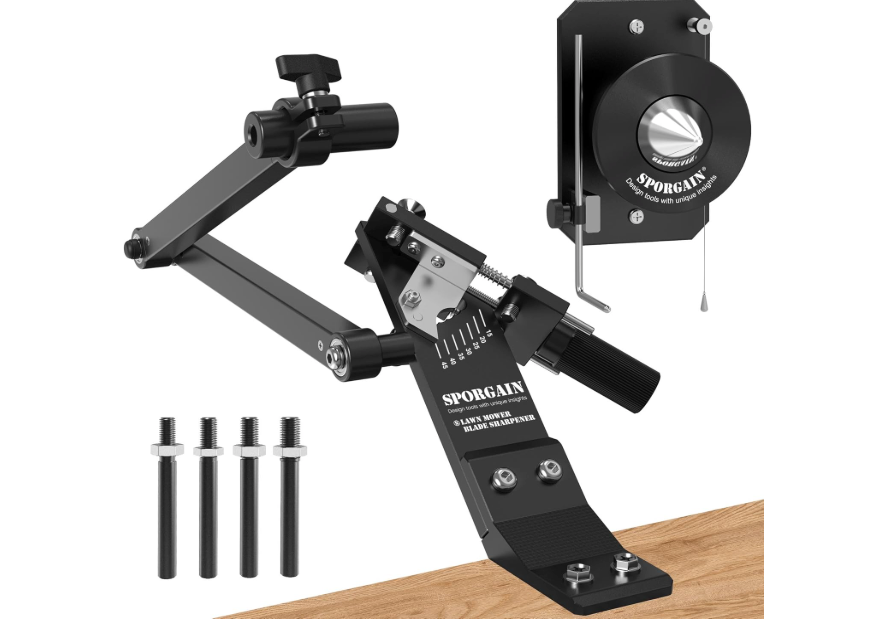
Rating: 4.6/5 Stars
This comprehensive package includes both sharpening and balancing capabilities, addressing two critical aspects of blade maintenance. The included magnetic balancer ensures blades run smoothly after sharpening, preventing vibration and uneven wear.
Key Features:
- 15°-45° adjustable sharpening frame
- High-precision magnetic blade balancer
- Compatible with various mower blade types
- Professional-grade construction
- Complete blade maintenance solution
Blade balancing often gets overlooked during DIY sharpening, yet imbalanced blades cause excessive vibration, premature bearing wear, and poor cutting quality. This kit’s inclusion of a precision balancer sets it apart from competitors focused solely on sharpening.
Pros:
- Complete blade maintenance solution
- Magnetic balancer ensures smooth operation
- Professional results with proper technique
- Reduces long-term mower maintenance costs
- Suitable for multiple blade types and sizes
Cons:
- Higher cost than sharpening-only tools
- Requires angle grinder (sold separately)
- More complex setup than simple sharpeners
The balancer’s magnetic design works with any ferrous blade, providing accurate weight distribution readings. This feature proves particularly valuable for users maintaining multiple mowers or those seeking professional-quality results from home maintenance.
4. SHARPAL 121N Dual-Grit Diamond Sharpening Stone

Rating: 4.4/5 Stars
Diamond sharpening technology offers superior metal removal and edge retention compared to traditional abrasives. The dual-grit design progresses from coarse shaping to fine finishing, delivering exceptional sharpness levels.
Key Features:
- Dual-grit diamond abrasive (325/1200 grit)
- Angle guide for consistent bevels
- Works on multiple tool types
- Long-lasting diamond coating
- Compact file design for easy handling
The 325-grit side handles major restoration work, removing nicks and reshaping damaged edges. The 1200-grit side creates razor-sharp finishing edges that cut cleanly through grass without tearing. This progression approach ensures optimal blade geometry and cutting performance.
Pros:
- Diamond abrasive cuts faster than traditional materials
- Dual-grit design provides complete sharpening solution
- Angle guide ensures proper bevel angles
- Long service life with minimal wear
- Suitable for various cutting tools
Cons:
- Higher cost than conventional sharpening stones
- Manual operation requires more time and effort
- Learning curve for optimal pressure and technique
Diamond sharpening stones maintain their cutting ability throughout their service life, unlike traditional stones that wear and become less effective over time. This consistency ensures repeatable results and justifies the higher initial investment for serious lawn care enthusiasts.
5. Oregon Economy Lawn Mower Blade Sharpener & Grinder

Rating: 4.3/5 Stars
Oregon’s dedicated blade grinder represents the professional approach to mower blade maintenance. The 1/3 HP motor provides consistent power for efficient sharpening, while adjustable features accommodate various blade types and conditions.
Key Features:
- Dedicated 1/3 HP motor for consistent power
- Heavy-duty construction for commercial use
- Adjustable blade guides and angles
- Professional grinding wheel for optimal results
- Complete standalone sharpening station
This grinder transforms blade sharpening from a tedious chore into a quick, efficient process. The dedicated motor maintains consistent speed under load, ensuring uniform material removal and professional-quality edges. The heavy-duty construction withstands frequent use in commercial environments.
Pros:
- Professional-quality results with minimal effort
- Dedicated motor provides consistent performance
- Heavy-duty construction for longevity
- Faster than manual sharpening methods
- Suitable for high-volume blade maintenance
Cons:
- Significantly higher cost than manual tools
- Requires dedicated workspace and storage
- Overkill for casual homeowner use
- Potential for removing too much metal if misused
The Oregon grinder appeals to professional landscapers, equipment dealers, and serious enthusiasts who sharpen multiple blades regularly. Its efficiency and consistency justify the investment for users who value time savings and professional results.
Choosing the Right Blade Sharpener for Your Needs
Selecting the optimal sharpener depends on several factors including usage frequency, skill level, and budget considerations. Understanding these variables helps narrow the choices to tools that match your specific requirements.
Frequency of Use Considerations
Homeowners who mow weekly during growing season typically need sharpening 2-3 times annually. For this usage level, manual sharpeners or adjustable frame tools provide adequate performance without excessive investment. The SHARPAL 103N or basic adjustable frame sharpeners handle typical homeowner needs effectively.
Professional landscapers and lawn care services require more robust solutions. Daily mowing schedules and challenging conditions accelerate blade dulling, necessitating frequent sharpening. The Oregon grinder or premium adjustable frame systems justify their cost through time savings and consistent results.
Enthusiast gardeners fall between these extremes, often benefiting from mid-range solutions that balance capability with cost. The adjustable frame with balancer provides professional results for serious hobbyists without the expense of dedicated grinding equipment.
Skill Level Requirements
Manual sharpening tools require technique development for optimal results. File-based sharpeners and handheld tools depend on user skill to maintain proper angles and achieve consistent edges. Beginners may struggle initially but develop proficiency with practice.
Guided systems reduce skill requirements through built-in angle controls and positioning aids. Adjustable frame sharpeners and angle guides help users achieve consistent results regardless of experience level. These tools bridge the gap between manual sharpening and automated systems.
Powered grinders require minimal skill but demand respect for safety procedures. The Oregon grinder’s automated operation produces consistent results with proper setup, though users must understand grinding principles to avoid blade damage.
Blade Sharpening Techniques and Best Practices
Proper sharpening technique significantly impacts results regardless of tool choice. Understanding fundamental principles prevents common mistakes and ensures optimal blade performance.
Angle Maintenance
Maintaining original blade angles preserves cutting efficiency and prevents premature wear. Most mower blades feature 30-45 degree bevels designed for optimal grass cutting performance. Deviating significantly from these angles compromises cutting quality and may stress the blade.
File the bevel consistently across the entire cutting edge, maintaining uniform angle and pressure. Inconsistent angles create weak points and uneven cutting performance. Take frequent breaks to assess progress and maintain consistent hand positioning throughout the sharpening process.
Power grinders simplify angle maintenance through adjustable guides and consistent material removal. Follow manufacturer recommendations for angle settings and avoid removing excessive material during single sharpening sessions.
Metal Removal Guidelines
Remove only enough metal to restore sharp edges and eliminate nicks or damage. Excessive material removal shortens blade life and may compromise structural integrity. Focus on creating consistent, sharp edges rather than removing maximum material.
Start with coarse abrasives for major restoration work, progressing to finer grits for finishing. This progression approach ensures efficient material removal followed by smooth, sharp edges that cut cleanly through grass.
Check blade balance after sharpening to ensure smooth operation. Unbalanced blades cause excessive vibration and may damage mower components over time. File small amounts from the heavy end until the blade balances horizontally when suspended from its center.
Cost Analysis: DIY vs Professional Sharpening
Understanding long-term costs helps justify sharpener investments and informs maintenance strategies. Professional sharpening services typically charge $10-20 per blade, while quality sharpeners cost $30-200 depending on features and capabilities.
Break-Even Analysis
Homeowners with single mowers reach break-even after 3-6 professional sharpening sessions, depending on sharpener cost. Annual sharpening costs of $30-40 quickly justify tool purchases, particularly for multi-mower households.
Professional landscapers achieve faster payback through higher blade volumes and frequency. Weekly blade sharpening for multiple mowers creates substantial annual costs that premium sharpening equipment eliminates within months.
Calculate your annual blade sharpening needs based on mowing frequency and conditions. Multiply by professional service costs to determine potential savings from tool investment. Include time savings and convenience factors in your decision.
Hidden Costs and Benefits
DIY sharpening eliminates transportation time and scheduling constraints associated with professional services. Immediate blade maintenance capability prevents lawn damage from continued use of dull blades while awaiting service appointments.
Quality sharpeners maintain their value through years of service, while professional sharpening represents ongoing expense without asset accumulation. Resale value recovery partially offsets initial tool investments for users who upgrade or change needs.
Consider blade replacement costs when evaluating sharpening frequency. Proper maintenance extends blade life significantly, reducing replacement frequency and associated costs. Quality sharpening preserves blade geometry and prevents premature wear from poor cutting performance.
Safety Considerations and Precautions
Blade sharpening involves sharp objects and potentially dangerous equipment requiring proper safety procedures. Understanding risks and implementing appropriate precautions prevents injuries and ensures safe working conditions.
Personal Protective Equipment
Safety glasses protect eyes from metal particles and debris generated during sharpening. Even manual filing produces small metal fragments that pose eye injury risks. Choose wraparound styles that provide complete coverage from multiple angles.
Work gloves protect hands from sharp blade edges and provide improved grip during handling. Select cut-resistant materials that maintain dexterity for precise control. Avoid loose-fitting gloves that may catch on moving parts or sharp edges.
Dust masks prevent inhalation of metal particles and grinding dust, particularly important when using powered equipment. Choose appropriate filtration levels based on work environment and duration.
Workspace Setup
Establish dedicated workspace with adequate lighting and ventilation for safe sharpening operations. Poor lighting increases accident risk and compromises result quality. Ensure adequate air circulation to remove dust and debris.
Secure workpieces properly to prevent movement during sharpening. Unstable blades may slip or shift unexpectedly, causing injury or poor results. Use appropriate clamps or vises designed for the specific sharpening method.
Keep work areas clean and organized to prevent accidents and tool damage. Remove debris regularly and store tools properly when not in use. Maintain clear pathways and emergency access throughout the workspace.
Maintenance and Storage of Sharpening Tools
Proper tool maintenance preserves performance and extends service life significantly. Quality sharpening equipment represents significant investment that requires protection from corrosion, damage, and premature wear.
Cleaning Procedures
Clean sharpening tools after each use to remove metal particles and debris. Accumulated material reduces cutting efficiency and may cause premature wear. Use appropriate solvents and cleaning methods for specific tool materials.
Oil moving parts regularly to prevent corrosion and ensure smooth operation. Pay particular attention to adjustment mechanisms and bearing surfaces that experience wear during normal use. Follow manufacturer recommendations for lubrication frequency and products.
Inspect tools regularly for wear, damage, or deterioration. Address issues promptly to prevent further deterioration and maintain optimal performance. Replace worn components before they compromise results or safety.
Storage Solutions
Store sharpening tools in dry environments to prevent corrosion and rust formation. Humidity control becomes critical for long-term tool preservation, particularly for precision instruments and measurement devices.
Protect cutting edges and abrasive surfaces from damage during storage. Use appropriate covers or sheaths to prevent nicks and maintain sharpness. Avoid storing tools where they may contact hard surfaces or other tools.
Organize storage systems for easy access and inventory management. Label containers and maintain tool lists to facilitate quick location and condition monitoring. Consider climate-controlled storage for valuable precision instruments.
Troubleshooting Common Sharpening Problems
Understanding common issues and their solutions improves sharpening results and prevents blade damage. Most problems stem from technique errors or equipment misuse rather than fundamental tool limitations.
Uneven Sharpening Results
Inconsistent pressure or angle during manual sharpening creates uneven edges and poor cutting performance. Maintain steady pressure and consistent angles throughout the sharpening process. Take frequent breaks to assess progress and adjust technique as needed.
Worn or damaged sharpening surfaces produce inconsistent results regardless of technique. Inspect abrasives regularly and replace when worn. Dress grinding wheels periodically to maintain proper cutting action and surface finish.
Improper blade clamping allows movement during sharpening, creating uneven results and potential safety hazards. Ensure secure mounting and check frequently during extended sharpening sessions.
Rapid Edge Deterioration
Excessive grinding removes too much material and creates thin, weak edges that dull quickly. Focus on restoring sharpness rather than removing maximum material. Multiple light passes often produce better results than aggressive single passes.
Improper blade angles compromise cutting performance and accelerate wear. Maintain original manufacturer angles unless specific conditions require modifications. Document successful angle settings for future reference.
Heat buildup during powered grinding can affect blade temper and hardness. Use light pressure and allow cooling between passes. Consider flood cooling or frequent quenching for extensive restoration work.
Advanced Sharpening Techniques
Experienced users can employ advanced techniques to achieve superior results and address challenging blade conditions. These methods require additional skill development but offer significant performance improvements.
Progressive Grit Systems
Start with coarse abrasives to remove damage and establish proper blade geometry, then progress through increasingly fine grits for finishing. This approach ensures efficient material removal followed by smooth, sharp edges.
Document successful grit progressions for specific blade types and conditions. Consistency improves results and reduces trial-and-error during future sharpening sessions. Consider material hardness and damage extent when selecting starting grits.
Monitor progress carefully during each grit stage to avoid over-working blades. Transition to finer grits when the previous stage achieves its objectives. Rushing through progressions often compromises final results.
Specialized Blade Treatments
Mulching blades require different approaches due to their complex geometry and specialized cutting surfaces. Focus on maintaining the original blade profile while ensuring all cutting edges receive proper attention.
High-lift blades benefit from careful attention to the upswept sections that create airflow for grass discharge. Maintain proper angles on both cutting edges and lifting surfaces for optimal performance.
Gator blades and other specialty designs require understanding of their intended function to achieve proper sharpening results. Research specific requirements before attempting maintenance on unfamiliar blade types.
Environmental Impact and Sustainability
Proper blade maintenance contributes to environmental sustainability through extended equipment life and improved fuel efficiency. Sharp blades require less engine power, reducing fuel consumption and emissions during operation.
Equipment Longevity
Regular blade sharpening prevents excessive engine strain and reduces wear on mower components. Sharp blades cut cleanly with minimal resistance, allowing engines to operate at designed efficiency levels throughout their service life.
Properly maintained blades reduce vibration and stress on spindle assemblies, deck structures, and drive systems. This reduced stress extends component life and delays replacement needs, reducing environmental impact from manufacturing and disposal.
Document maintenance schedules and track blade life to optimize replacement timing. Quality sharpening can extend blade service life significantly compared to running blades until severely worn.
Resource Conservation
DIY sharpening eliminates transportation requirements associated with professional services, reducing fuel consumption and emissions. Local maintenance also supports equipment familiarity and encourages proper care practices.
Quality sharpening tools last decades with proper care, representing excellent resource utilization compared to disposable alternatives. Initial investments pay dividends through years of reliable service and consistent results.
Proper blade maintenance reduces grass stress and promotes healthy growth requiring less water and chemical inputs. Clean cuts heal quickly and resist disease, reducing the need for lawn treatments and interventions.
Conclusion
Selecting the right lawn mower blade sharpener transforms routine maintenance from a chore into an efficient process that improves lawn quality and equipment performance. The five sharpeners reviewed offer distinct advantages for different users and applications.
The Updated Lawn Mower Blade Sharpener with Adjustable Frame provides exceptional versatility and precision for users seeking professional results with angle grinder compatibility. Its adjustable design accommodates various blade types while maintaining consistent, accurate bevels.
SHARPAL’s 103N All-in-1 Multi-Sharpener appeals to users seeking versatility and value in a compact package. Its ability to maintain multiple garden tools makes it ideal for casual users and those with limited storage space.
The Adjustable Mower Blade Sharpener with Balancer offers the most complete maintenance solution, addressing both sharpening and balancing needs. This comprehensive approach ensures optimal blade performance and smooth mower operation.
SHARPAL’s 121N Dual-Grit Diamond Sharpening Stone provides superior cutting ability and longevity through diamond abrasive technology. Its progression from coarse to fine grits delivers exceptional edge quality for demanding users.
The Oregon Economy Lawn Mower Blade Sharpener & Grinder represents the professional standard for high-volume blade maintenance. Its dedicated motor and heavy-duty construction justify the investment for commercial users and serious enthusiasts.
Consider your specific needs, budget, and skill level when selecting a sharpener. Lawn mower blades should be sharpened after 20 to 25 hours of use, making the right tool choice crucial for maintaining optimal cutting performance throughout the growing season.
Quality blade maintenance improves lawn health, reduces equipment stress, and enhances overall mowing experience. The investment in proper sharpening equipment pays dividends through improved results, extended blade life, and the satisfaction of maintaining professional-quality cutting performance.
Sharp blades create clean cuts that promote grass health and resist disease, while dull blades tear and damage grass, leading to brown tips and increased susceptibility to problems. Choose the sharpener that matches your needs and commit to regular maintenance for the best possible lawn care results.: Complete Guide and Reviews 2025
Your lawn’s health depends on more than water and fertilizer. Sharp mower blades create clean cuts that promote grass health, while dull blades tear and damage grass, leaving your lawn vulnerable to disease and browning. Most homeowners should sharpen their lawn mower blades twice a year, making a quality blade sharpener an essential tool for lawn care enthusiasts.
This comprehensive guide examines the top lawn mower blade sharpeners available today. We’ll explore different sharpening methods, analyze user experiences, and help you choose the perfect tool for maintaining razor-sharp blades that deliver professional-quality cuts.
Why Sharp Lawn Mower Blades Matter
Before diving into product reviews, understanding the importance of blade maintenance sets the foundation for making informed purchasing decisions. Lawn mower blades should be sharpened after 20 to 25 hours of use, though this frequency may increase based on cutting conditions and grass types.
Sharp blades slice through grass cleanly, creating wounds that heal quickly and resist disease. Dull blades, conversely, crush and tear grass blades, creating jagged wounds that invite pathogens and stress the plant. The visual difference between lawns cut with sharp versus dull blades becomes apparent within days of mowing.
Professional landscapers recognize that blade sharpness directly impacts their work quality and client satisfaction. Stone can easily dent or nick the blades, making regular sharpening even more critical for those working in challenging environments with rocks, roots, and debris.
Signs Your Mower Blades Need Sharpening
Recognizing when blades require attention prevents lawn damage and ensures optimal cutting performance. Several visual and performance indicators signal the need for blade maintenance.
Brown grass tips appear within 24-48 hours of cutting with dull blades. This browning occurs because torn grass tissues cannot seal properly, allowing moisture loss and creating entry points for diseases. Sharp blades create clean cuts that seal naturally, maintaining the grass’s green appearance.
Uneven cutting patterns indicate blade problems that sharpening can resolve. When one blade edge becomes duller than others, the mower pulls slightly in one direction, creating strips of longer grass. This unevenness becomes particularly noticeable on flat, well-maintained lawns.
Increased mowing time and effort suggest blade dulling. Sharp blades require less engine power to cut through grass, while dull blades force the engine to work harder. You’ll notice increased fuel consumption, longer cutting times, and potentially engine strain when blades lose their edge.
